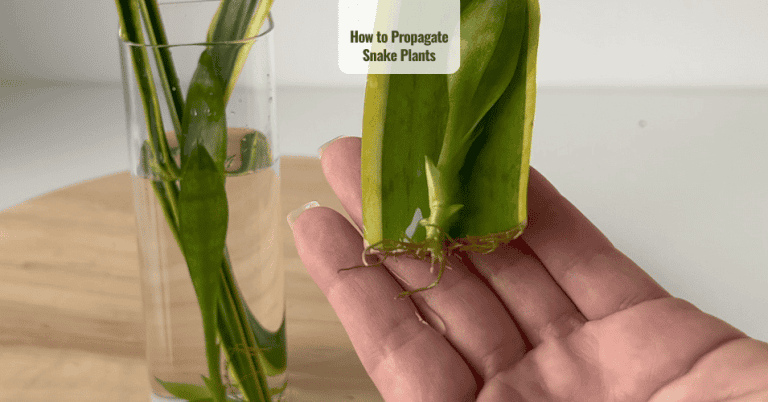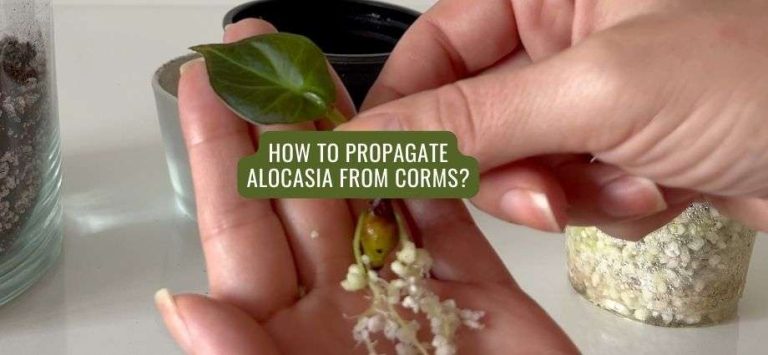How to Propagate Snake Plants from Leaves in Water
If you’ve been wondering how to propagate snake plants from leaves in water, you’ve come to the right place. Propagating snake plants using leaf cuttings is one of the easiest and most rewarding ways to multiply your collection. Whether you want to fill your home with more greenery or gift new plants to friends and family, this method is perfect for beginners and experienced plant lovers alike.
In this guide, I’ll walk you through the full process of how to propagate snake plants from leaves in water, share essential care tips, and explain what to expect during each stage. Plus, for a visual walkthrough, you can watch my detailed video tutorial linked below.
Why Propagate Snake Plants from Leaves in Water?

Snake plants (Sansevieria) are known for their durability and low maintenance, making them a popular indoor plant. Propagating them from leaf cuttings in water offers several advantages:
- Easy to do at home: No special equipment required, just a healthy leaf and some water.
- Cost-effective: Multiply your plants without buying new ones.
- Visual progress: Watch roots grow as you nurture your cuttings in clear water.
- Perfect for gifts: Share beautiful, home-grown plants with loved ones.
This propagation method is gentle and effective, allowing you to enjoy the beauty of new snake plants in just a few weeks.
Step-by-Step Guide: How to Propagate Snake Plants from Leaves in Water
1. Selecting and Cutting Healthy Leaves
Choose a healthy, mature leaf from your existing snake plant. Using a sharp, clean knife or scissors, cut the leaf near the base. For best results, cut the leaf into 3-4 inch sections. Remember to note which end is the bottom (the part that was closer to the roots), as this is the end that should go into the water.
2. Preparing Leaf Cuttings for Rooting
Allow the cut leaf sections to dry for 1-2 days. This helps prevent rot by allowing the cut ends to callous over. Once dried, place the bottom end of each cutting into a clean jar or vase filled with filtered water. Ensure the water covers only the base, keeping most of the leaf above water to avoid rotting.
3. Providing the Right Environment
Place your jar in a warm spot with bright, indirect light. Avoid direct sunlight, which can damage delicate cuttings. Change the water every 1-2 weeks to keep it fresh and prevent bacterial growth. Within 3-6 weeks, you should see roots emerging from the base of the cuttings.
4. Transplanting into Soil
Once roots are a few inches long and healthy, it’s time to transfer the cuttings into a pot with well-draining soil. Use a mix suited for succulents or cacti to ensure excess water drains away quickly. Water lightly after planting and gradually increase as the plant establishes.
Caring for Your Propagated Snake Plants
Snake plants are famously low maintenance. To keep your newly propagated plants healthy:
- Light: Provide bright indirect light but tolerate low light conditions.
- Watering: Water sparingly; snake plants prefer drying out between waterings.
- Humidity: Average household humidity works well.
- Fertilizing: Feed with a balanced, diluted fertilizer during growing seasons (spring/summer).
By following these care tips, your propagated snake plants will flourish and bring fresh life to your home.
Common Mistakes to Avoid When Learning How to Propagate Snake Plants from Leaves in Water
When mastering how to propagate snake plants from leaves in water, it’s important to be aware of some common pitfalls that can slow down or even hinder your success. Avoiding these mistakes will save you time and help your new snake plants thrive.
One of the most frequent errors when learning how to propagate snake plants from leaves in water is not allowing the cut leaf ends to dry and callous before placing them in water. Plant cuttings placed in water too soon can develop rot, which kills the cutting before roots can form. Always let the leaf cuttings rest for at least 24 to 48 hours in a dry, shaded spot before beginning water propagation.
Another mistake is submerging too much of the leaf in water. When propagating snake plants from leaves in water, only the bottom inch or so should be underwater. If the entire leaf is submerged, it can rot quickly, leading to failure.
Water quality also plays a role in successful propagation. When practicing how to propagate snake plants from leaves in water, use filtered or distilled water whenever possible. Tap water with high chlorine or mineral content may stress the cuttings and delay root growth.
Lastly, don’t rush the process! Healthy root development can take several weeks, so patience is essential when learning how to propagate snake plants from leaves in water. Keep the cuttings in a warm, bright spot (away from direct sun), change the water regularly, and you’ll soon see strong roots ready for planting.
Common Challenges & Troubleshooting Tips
Rotting cuttings: Ensure cut ends dry before water propagation and avoid submerging leaves fully.
Slow root growth: Keep cuttings in a warm, stable environment and be patient.
Yellowing leaves: Avoid overwatering once in soil, and ensure good drainage.
For a detailed step-by-step visual guide on how to propagate snake plants from leaves in water, watch the video below. See the entire process from cutting to rooting to planting, and learn tips to ensure your success.
If you want to learn something more about organic fertilizers for houseplants make sure to click here and check it out!
Explore More Music for Your Plants & Stay Connected!
Check out my Playlist: Music for Plants and find the perfect tunes to help your plants and yourself thrive.
Don’t forget to visit my YouTube Channel Plant House & Garden and subscribe — your support means the world to me!
Connect with me on social media for more plant care tips and music updates: Instagram | Facebook | X | Pinterest | Reddit | TikTok
Love plants? Love music? Don’t miss out on new updates — hit subscribe and follow now to keep your plants happy and your space vibrant!







